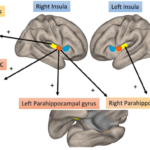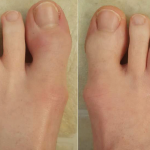As demonstrated by Kerschbaumer et al., the changes in recruitment patterns, most notably the geographic shift to less affluent countries, has had a significant impact on the placebo (PBO) response in PsA trials over the years. Thus, PBO responses have increased among trials with start dates from 1996–2019. In addition to this trend, the PBO response showed a strong negative correlation with the gross national income. Although the basis of these changes is not fully known, the likely explanation relates to prior therapy of the enrolled patients and their access of healthcare coupled with the regression of the mean.
The increase in PBO response has important implications for trial design and evaluation of the efficacy of any new agent, as well as comparison with previously approved therapies.
8. Effect of Systemic Immunosuppressive Therapies on Cardiovascular Risk
Abstract 0141: Esmaeili et al.8
PsA, like other forms of inflammatory arthritis, is associated with an increased prevalence of atherosclerotic cardiovascular disease (ASCVD), likely reflecting the impact of systemic inflammation on the vasculature. The frequency of ASCVD events, however, may be modifiable by the use of immunosuppressive agents, although the risk of heart failure may also occur with certain agents.
To assess these effects, Esmaeili et al. analyzed a retrospective cohort in Veterans Administration hospitals in Southern California, comparing patients with PsA with matched controls. Among patients on methotrexate or tumor necrosis factor inhibitor (TNFi) monotherapy, the risk of cardiovascular events was higher than controls, although treatment with Th17 inhibitors (Th17i targeting IL-17 or IL-12/23) showed lower rates. Other analyses showed a lower risk of cardiovascular accidents with biologic agents but the risk of heart failure was slightly reduced with TNF1 or unchanged or increased with Th17i.
This study is important in demonstrating the increased risk of cardiovascular events in patients with PsA and indicating the potential of biologic therapies in attenuating this risk; the effects on heart failure, however, remain unclear. Although this study prompts the need for more extensive evaluation of the effects of current and new agents on ASCVD risk, it also suggests that effects of therapy on the heart and the vascular system may differ depending on cytokine or pathway targeted. In this context, the term biologic may be too encompassing to allow distinction of relevant differences among agents.
9. Diagnostic Ultrasound Enthesitis Tool (DUET) for PsA
Abstract 0851: Eder et al.9
In addition to joint involvement, enthesitis is a key feature of PsA, although clinical assessment of the involvement of the entheses can be challenging. To determine the utility of ultrasound (US), Eder and colleagues from 17 centers evaluated a new PsA-specific sonographic scoring system for detecting enthesitis at multiple sites. The US protocol entailed 16 entheseal sites in the upper and lower extremities, with abnormalities scored on a semi-quantitative scale for inflammatory and structural lesions. The study included 213 patients with PsA and 106 controls.



